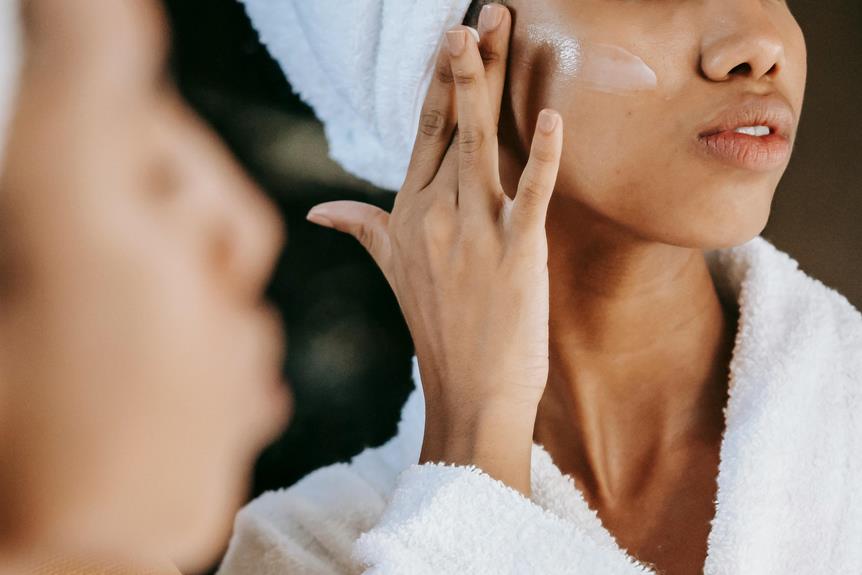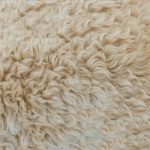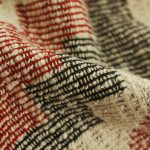Have you ever wrapped yourself in a cloud? That's the kind of softness French terry is known for. But is it really as cozy as they claim?
Let's dive into the secrets of this luxurious fabric and uncover the truth. From its unique origins to the factors that contribute to its unparalleled softness, we'll explore every aspect that makes French terry so irresistibly plush.
Get ready to unravel the mystery behind this beloved fabric and discover the key to maintaining its heavenly texture. Whether you're a seasoned enthusiast or a curious newcomer, prepare to master the art of French terry and elevate your comfort game to a whole new level.
Key Takeaways
- French terry is a popular fabric choice due to its origins in France and its accessibility and versatility.
- The fabric has unique features such as uncut loops on one side and a soft, brushed interior, making it plush and durable.
- French terry is known for its comfort and breathability, making it suitable for everyday wear, loungewear, and activewear.
- Factors contributing to the softness of French terry include its fabric construction, high-quality yarn, and proper fabric care.
The Origins of French Terry
You may not have realized that the origins of French terry can be traced back to the 19th century when it was first woven in France. The evolution of this fabric has been quite remarkable, shaping its global impact over the years. Initially crafted from silk, French terry underwent a significant transformation with the introduction of cotton, which made it more accessible and versatile. This shift marked a turning point, allowing the fabric to be embraced by a wider audience, thereby contributing to its global popularity.
French terry's global impact extends beyond just its widespread use in clothing. The versatility and comfort of this fabric have made it a staple in various industries, including sportswear and loungewear. Its ability to provide warmth without the weight of traditional sweatshirt material has made it a favorite among athletes and fashion enthusiasts alike.
The evolution and global impact of French terry have solidified its position as a timeless fabric, valued for its comfort, durability, and style. Understanding its rich history adds a layer of appreciation for this versatile textile.
How French Terry Differs From Other Fabrics
You'll be amazed at how French Terry differs from other fabrics. Its unique texture sets it apart, offering a comfortable and breathable feel that's hard to find in other materials.
The versatility of French Terry in clothing makes it a standout choice for anyone looking for both style and comfort.
French Terry's Unique Texture
When touching French terry, your fingers will notice its unique texture that sets it apart from other fabrics. This texture is a result of French terry's fabric construction, which includes uncut loops on one side and a soft, brushed interior on the other. This creates a plush, luxurious feel that's both lightweight and breathable.
In addition to its softness, French terry is known for its durability, making it a reliable choice for various garment applications. Its moisture-wicking properties further enhance its appeal, keeping you comfortable and dry throughout the day.
French terry also offers a wide range of color options, allowing for versatile and stylish designs. Whether used for athleisure wear, loungewear, or casual apparel, French terry's unique texture makes it a standout choice.
Versatility in Clothing
To understand how French terry differs from other fabrics, consider its versatility in clothing applications. Its unique texture and moisture-wicking properties make it a standout choice for a wide range of garment options.
French terry offers versatile styles that can effortlessly transition from casual to athleisure wear, making it an ideal choice for various occasions. The fabric's ability to provide comfortable layering makes it perfect for creating multi-functional and stylish clothing pieces. Whether it's a cozy hoodie, a lightweight jacket, or comfortable joggers, French terry fabric enhances the comfort and functionality of these garments.
Its versatility allows for easy integration into both active and leisurewear, providing a comfortable and stylish option for a variety of clothing needs. French terry's adaptability truly sets it apart from other fabrics in the fashion industry.
Comfort and Breathability
French terry's comfort and breathability set it apart from other fabrics, making it a popular choice for a wide range of clothing options.
When it comes to comfort, French terry fabric excels due to its soft, smooth texture that feels gentle against the skin. This makes it an ideal choice for everyday wear, loungewear, and activewear.
Additionally, its breathability allows for air circulation, preventing moisture buildup and keeping you feeling fresh and comfortable throughout the day.
In terms of durability, French terry is known for its ability to withstand regular wear and washing without losing its shape or softness, making it a reliable choice for long-lasting comfort.
Its unique combination of comfort and durability makes French terry a standout fabric for a variety of clothing needs.
Factors That Contribute to French Terry's Softness
You may often wonder what makes French Terry so soft. The softness of French Terry can be attributed to several key factors, including fabric construction, yarn quality, and fabric care. Let's delve into these factors to understand why French Terry is renowned for its luxurious softness.
| Factors | Description |
|---|---|
| Fabric Construction | French Terry is woven with looped pile on one side, creating a soft and plush texture. |
| Yarn Quality | High-quality yarn, such as combed or ring-spun cotton, contributes to a smoother and softer feel. |
| Softness | The looped pile structure of French Terry and the use of fine yarn result in exceptional softness. |
| Fabric Care | Proper care, such as gentle washing and avoiding high heat, helps maintain the fabric's softness. |
The fabric construction of French Terry, with its looped pile, provides a soft and cozy feel against the skin. Additionally, using high-quality yarn and proper fabric care further enhances the softness of French Terry. Understanding these factors allows you to appreciate the thought and craftsmanship behind the exceptional softness of French Terry.
Understanding French Terry's Texture
So, what exactly makes French Terry so irresistibly soft?
Well, let's break it down. French Terry's unique texture is the result of its looped, unbrushed interior, which not only provides a plush feel but also offers excellent moisture-wicking properties.
Understanding the texture of French Terry won't only help you appreciate its softness but also its breathability and comfort.
French Terry's Softness Explained
Exploring the texture of French Terry can help you understand its softness and versatility. The science behind softness lies in the fabric's unique looped design, which creates tiny, plush pockets of air that contribute to its exceptional softness. Here's a breakdown to help you grasp French Terry's remarkable softness:
- Looped Design: French Terry's looped construction gives it a plush, soft texture, making it incredibly comfortable against the skin.
- Breathability: The fabric's looped structure also allows for excellent breathability, keeping you comfortable in various temperatures.
- Durability: Despite its softness, French Terry is highly durable, thanks to its looped construction and the quality of the fibers used.
Understanding these aspects of French Terry's texture will deepen your appreciation for its luxurious softness and durability.
Benefits of French Terry
Understanding French Terry's texture enhances your appreciation for its luxurious softness and durability, allowing you to fully grasp the benefits it offers. French terry is known for its looped, soft pile interior, which provides exceptional comfort and warmth. Its unique texture not only feels amazing against your skin but also contributes to its durability. The fabric's construction makes it highly resistant to fraying and tearing, ensuring that your French terry garments stand the test of time. Additionally, French terry is designed with moisture-wicking properties, drawing sweat away from the body to keep you dry and comfortable. This combination of softness, durability, and moisture-wicking abilities makes French terry a top choice for activewear, loungewear, and casual everyday clothing.
| Benefits of French Terry | |
|---|---|
| Luxurious Softness | �� |
| Exceptional Durability | �� |
| Moisture-Wicking Properties | �� |
Caring for French Terry
To properly care for French terry and preserve its luxurious softness and durability, you should be mindful of its unique texture and construction. When washing French terry garments, follow these instructions to maintain their quality:
- Turn the garment inside out before washing to protect the outer surface and minimize pilling.
- Use a gentle cycle with cold water to prevent shrinkage and preserve the fabric's softness.
- Avoid using fabric softeners or harsh detergents, as they can damage the fibers and reduce the fabric's soft texture.
Tips for Maintaining French Terry's Softness
To maintain French Terry's softness, regularly wash it in cold water and avoid using fabric softeners. Fabric softeners can leave a residue on the fabric, reducing its softness over time. Instead, opt for a gentle, liquid detergent specifically formulated for delicate fabrics. Additionally, turn your French Terry garments inside out before washing to minimize pilling and preserve the fabric's smooth texture.
| Tips for Maintaining French Terry's Softness | Benefits |
|---|---|
| Wash in cold water | Preserves fabric integrity |
| Avoid fabric softeners | Prevents residue buildup |
| Use gentle, liquid detergent | Maintains fabric softness |
| Turn garments inside out before washing | Minimizes pilling |
Exploring Different Uses of French Terry
When considering the versatility of French Terry, you may find it used in a variety of clothing items and accessories. This fabric's adaptability makes it a popular choice for many innovative uses and eco-friendly options.
- Athleisure Wear
French Terry is commonly used in athletic wear such as sweatshirts, hoodies, and joggers due to its moisture-wicking properties and comfortable feel.
- Home Decor
Innovative designers are incorporating French Terry into home decor items like throw blankets, decorative pillows, and upholstery for a cozy and stylish touch.
- Eco-Friendly Fashion
With sustainability in mind, fashion brands are utilizing French Terry in eco-friendly lines of clothing, providing a durable and comfortable alternative to traditional materials.
As more people seek sustainable and versatile options, the use of French Terry continues to expand beyond traditional garments. Its ability to blend comfort, functionality, and eco-friendliness has made it a favored choice across various industries.
Whether you're looking for stylish athleisure wear, cozy home decor, or environmentally conscious fashion, French Terry offers a myriad of possibilities.
Debunking Common Myths About French Terry
Despite what some may believe, French Terry isn't scratchy at all, making it a comfortable and versatile fabric for various uses. Let's debunk some common misconceptions about French Terry.
One of the most prevalent myths is that French Terry isn't suitable for all seasons. In reality, French Terry is a breathable fabric, making it suitable for both warm and cool weather. Its unique looped design allows for air circulation, keeping you warm in cooler temperatures and cool in warmer weather.
Another misconception is that French Terry isn't durable. This is far from the truth. French Terry is a strong and resilient fabric, making it perfect for everyday wear. It holds up well to regular washing and wearing, making it a practical choice for clothing items.
Additionally, some people believe that French Terry isn't suitable for different garment types. However, this fabric's properties make it ideal for a wide range of clothing, from cozy sweatshirts and hoodies to stylish dresses and athleisure wear.
Understanding these fabric properties helps to dispel these common myths, showcasing French Terry as a reliable and comfortable choice for various clothing needs.
Frequently Asked Questions
What Are the Most Popular Colors and Patterns for French Terry Fabric?
Looking for popular color trends and unique pattern designs for French terry fabric? You'll find that soft pastels like blush and sage are in demand, along with classic stripes and tie-dye patterns.
Can French Terry Be Used for Making Swimwear or Activewear?
Sure, French terry can be used for making swimwear and activewear. It's absorbent and comfortable, making it a great swimwear material. Plus, its stretch and softness make it ideal for activewear fabric.
Is French Terry Fabric Suitable for People With Sensitive Skin or Allergies?
If you have fabric sensitivity or allergies, French terry may not be the best choice. It's not as breathable or moisture-wicking as some other fabrics, which can exacerbate skin issues. Consider alternatives for comfort.
Are There Any Specific Washing or Drying Techniques to Avoid Shrinking or Pilling of French Terry Fabric?
To avoid shrinking and prevent pilling of French terry fabric, wash it in cold water and air dry. Skip fabric softeners and opt for gentle detergents. Turn it inside out before washing to maintain its softness.
Can French Terry Fabric Be Used for Making Baby Clothing or Accessories?
Yes, French terry fabric is versatile and durable, making it perfect for baby clothing and accessories. Its softness ensures baby comfort, while its durability makes it ideal for baby fashion.
- How Does Ring Spun Cotton Affect Garment Fit and Shape Retention? - August 13, 2024
- What Are the Challenges in Producing Ring Spun Cotton? - August 13, 2024
- Is Ring Spun Cotton Suitable for Plus-Size Clothing? - August 13, 2024







